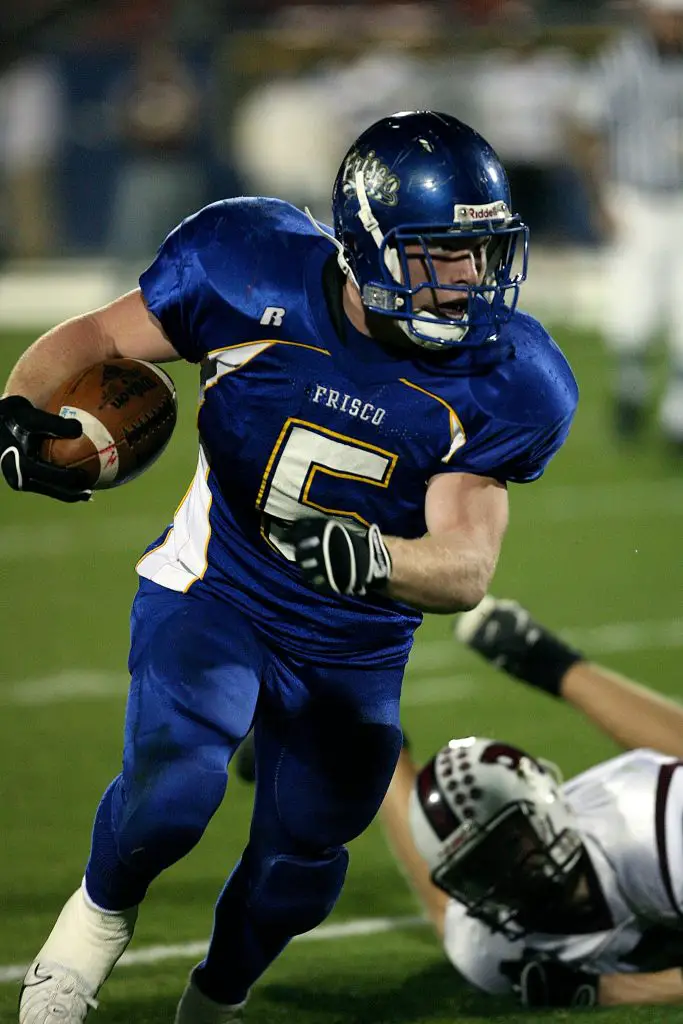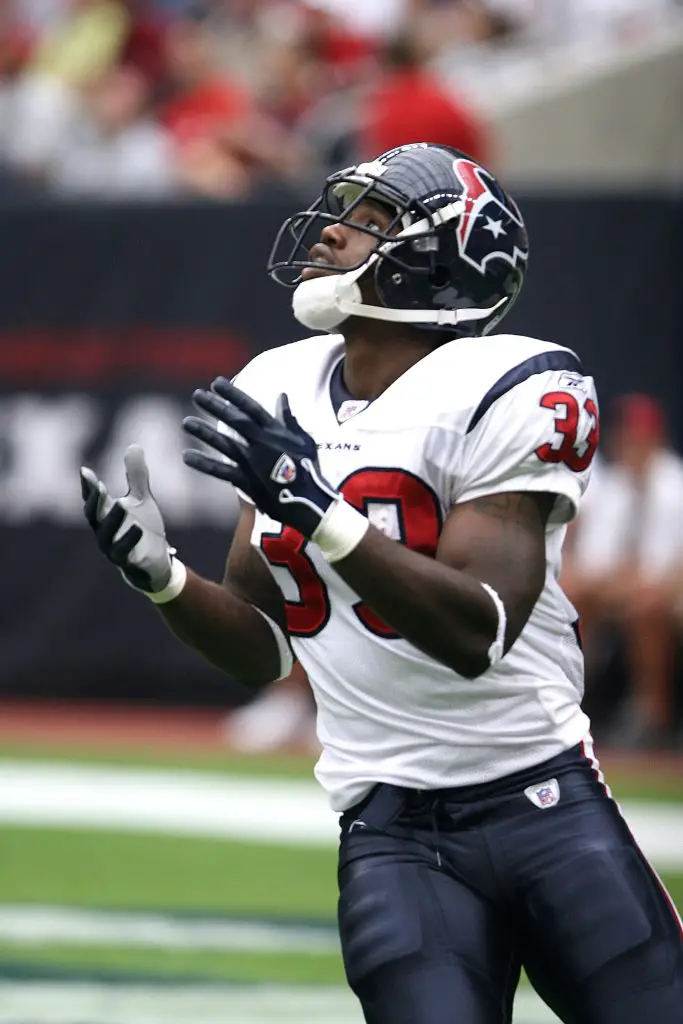What Position Should You Draft First In Fantasy Football?
Perfect Your Fantasy Football Draft Strategy
Embarking on a fantasy football draft without a plan is akin to setting sail without a map. Planning out what position you should draft first is an important step to winning your league this season. The draft is not just about choosing the best players, but about deploying a strategy tailored to your league’s unique scoring rules and format. Through this post, we seek to help both new and old owners understand the fundamentals of successful fantasy football drafting.

Understanding the Importance of Your First Pick
Your first draft pick significantly shapes your team. It’s said that while this pick alone can’t win your league, a poor choice can pose challenges. This decision involves more than choosing a top player; it sets your team’s tone. Opt for a reliable player who will consistently score. This choice influences your later picks, shaping your strategy as you build a strong, balanced team.
The Impact of League Settings on What Positions to Draft First
The structure of your fantasy football league plays a pivotal role in determining your draft strategy. Different leagues have varying rules concerning point scoring. Whether it’s Points Per Reception (PPR), Half-PPR, or Standard scoring—each of which alters the value of players. For instance, in PPR leagues, receivers and running backs who catch passes frequently are more valuable compared to standard leagues where touchdowns and yardage gains are more significant. Understanding these nuances is crucial as it will influence your drafting decisions. You must prioritize certain positions over others based on the scoring potential they offer within your league’s framework.
This section sets the stage for the detailed strategies that follow, ensuring you are equipped with the necessary insights to navigate your draft wisely. By understanding the critical importance of your first pick and the implications of your league’s settings, you are better prepared to make informed, strategic decisions that enhance your chances of fantasy football success.
The Case for Drafting Running Backs Early
Drafting a running back in the early rounds of your fantasy football league can be a pivotal decision with significant implications for your team’s success. This strategy is rooted in both the scarcity of high-output running backs and their potential to consistently score high fantasy points across the season. Here’s a breakdown of why prioritizing running backs early in the draft could be a winning strategy:
The Scarcity of Elite Running Backs
Elite running backs are a rare commodity in the NFL. Because of the physical demands of the position, few running backs can handle a high volume of touches and maintain top performance throughout the season. This scarcity makes securing a top-tier running back early a strategic move. The drop-off in production between the elite and the next tier of running backs can be steep, and having a reliable starter can give you a weekly advantage over opponents who may struggle with less consistent players.

Historical Data on Running Back Performance
Statistically, elite running backs offer more consistency in scoring compared to other positions like wide receivers or quarterbacks, who might be more dependent on game flow and matchups. High-caliber running backs typically receive a substantial share of team touches, both in the running and passing game, leading to more opportunities to accumulate fantasy points. For instance, the top-performing running backs generally tally upwards of 15-20 touches per game, making them less dependent on a single big play to reach their scoring potential.
When to Consider Other Positions in Fantasy Football Drafts
While securing a top-tier running back early is often seen as a solid strategy, understanding when to draft other positions can also significantly impact your team’s success. Here’s a breakdown of other key positions and when it might be best to consider selecting them:

Quarterbacks
- Value Selection: Typically, waiting until the middle rounds (rounds 4-7) to draft a quarterback can provide good value. Top quarterbacks are often reliable. However, the scoring difference between the best and the merely good at this position is generally smaller than at running back or wide receiver.
- Strategy Tip: In leagues where passing touchdowns are worth 6 points or in two-quarterback leagues, consider drafting a top-tier quarterback earlier.
Wide Receivers
- Value Selection: Early to mid-rounds (rounds 1-5) are prime for picking top wide receivers. PPR league receivers’ values are enhanced due to receptions.
- Strategy Tip: If you’ve secured a solid running back in round one, grabbing a top receiver in the second round can balance your roster effectively, particularly in leagues that start three WRs.
Tight Ends
- Value Selection: There’s a significant drop-off in production after the top three or four tight ends. Consider drafting one of these elite options by the end of the third round if available. Otherwise, waiting until later rounds (rounds 8-10) can still yield potential breakout candidates.
- Strategy Tip: In “TE premium” leagues where tight ends receive more points per reception, the value of top tight ends increases, making it wise to draft them earlier.
Defense/Special Teams
- Value Selection: Generally, it’s best to wait until the last two rounds before selecting a defense. The difference in scoring among the top defenses typically isn’t wide enough to justify an earlier pick.
- Strategy Tip: Focus on defenses with favorable early-season matchups or those known for high turnovers and sacks.
Kickers
- Value Selection: Always consider drafting kickers in the final round. The scoring variability among kickers is high week-to-week, making it not worth spending an early pick.
- Strategy Tip: Opt for kickers from teams with strong offenses that provide more scoring opportunities.
Conclusion
As you prepare for your fantasy football draft, understanding what positions to draft first is crucial. A smart strategy emphasizes early picks on valuable running backs while being flexible to capitalize on the strengths of quarterbacks, wide receivers, and other positions as the draft progresses. Stay adaptive, use your knowledge effectively, and aim for victory in your fantasy football league this season.
Frequently Asked Questions (FAQ)
What if the top running backs are already taken?
If the best running backs are off the board, consider pivoting to the best available player at another position with high scoring potential. This can help you maximize the value of your pick and maintain a balanced team.
How does a Superflex league change my drafting strategy?
In a Superflex league, where you can start a second quarterback in the flex position, quarterbacks significantly increase in value. It’s often strategic to draft two high-performing quarterbacks early because they typically score more points than players at other positions.
Can I win my league by drafting a quarterback first?
While it’s uncommon, drafting a top-tier quarterback first can be successful, especially in leagues where quarterbacks score higher points (e.g., 6 points per passing touchdown). This strategy depends heavily on the scoring settings and the depth of other positions.
What is the difference between PPR and Non-PPR leagues?
In PPR (Points Per Reception) leagues, players earn a point for each catch, increasing the value of wide receivers and pass-catching running backs. Non-PPR leagues do not award points for receptions, making touchdowns and yardage gains more critical.
Should I draft based on the best available player or fill specific team needs first?
It’s generally advisable to draft the best available player in the early rounds to maximize value and then focus on filling specific team needs in the later rounds. This approach helps build a strong, balanced team while avoiding reaching for less valuable players too early.
How does the size of my league influence my draft strategy?
The size of your league affects player availability and the depth of talent. In larger leagues, high-quality players at scarce positions (like running back) become more valuable, and it may be wise to secure them earlier than in smaller leagues.
What are “sleeper” picks and how can I identify them?
“Sleeper” picks are underrated players who have the potential to perform much better than their draft position would suggest. Identifying sleepers often involves looking for players who are poised to have a breakout year due to changes in team dynamics, coaching, or increased opportunities in their playing time.
How do bye weeks affect my draft strategy?
When drafting, it’s important to consider the bye weeks of your top players to avoid a scenario where many of your starters are off in the same week, which could lead to a weak lineup. Spread out the bye weeks among your key players to maintain a competitive team throughout the season.

